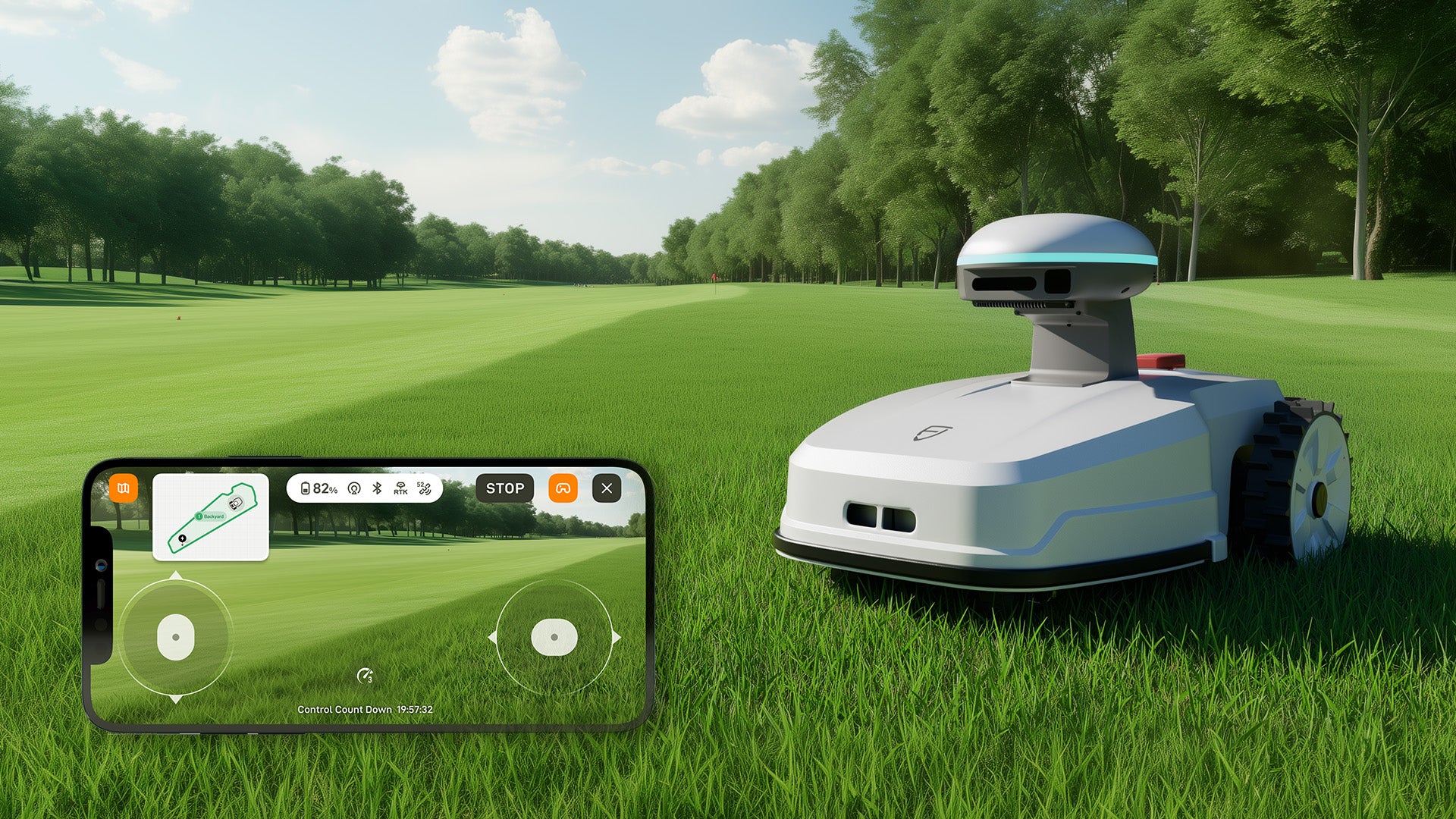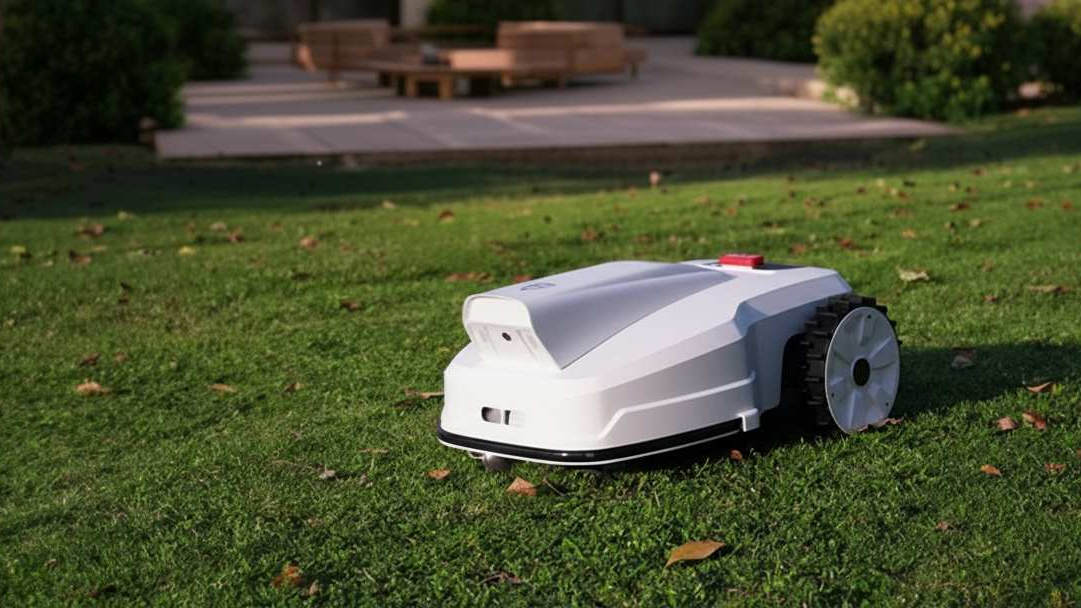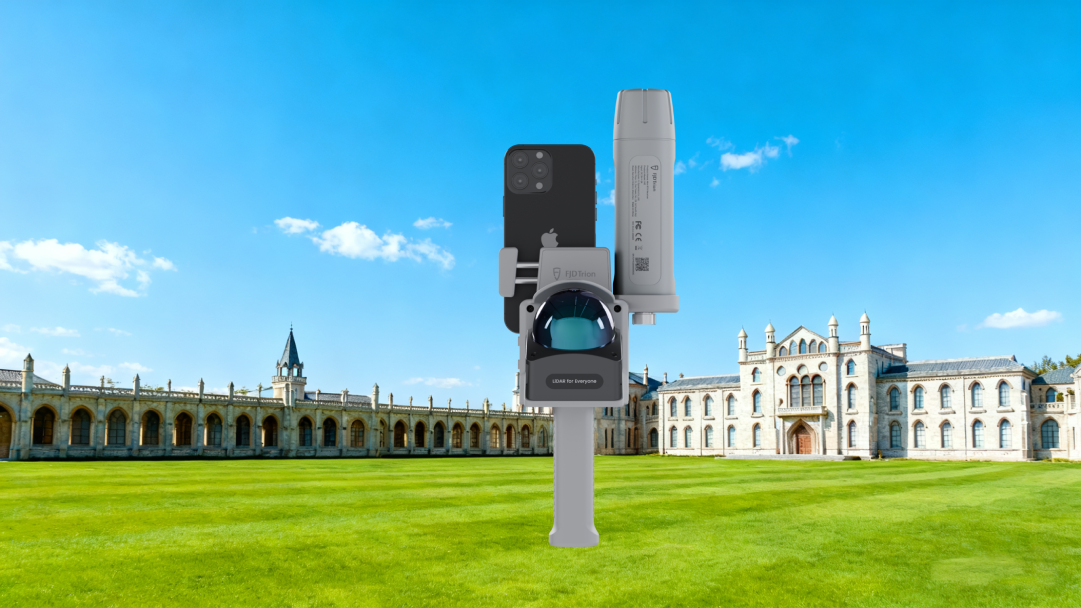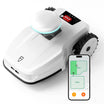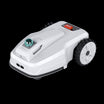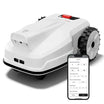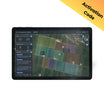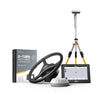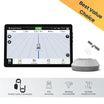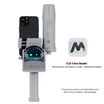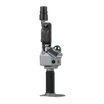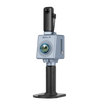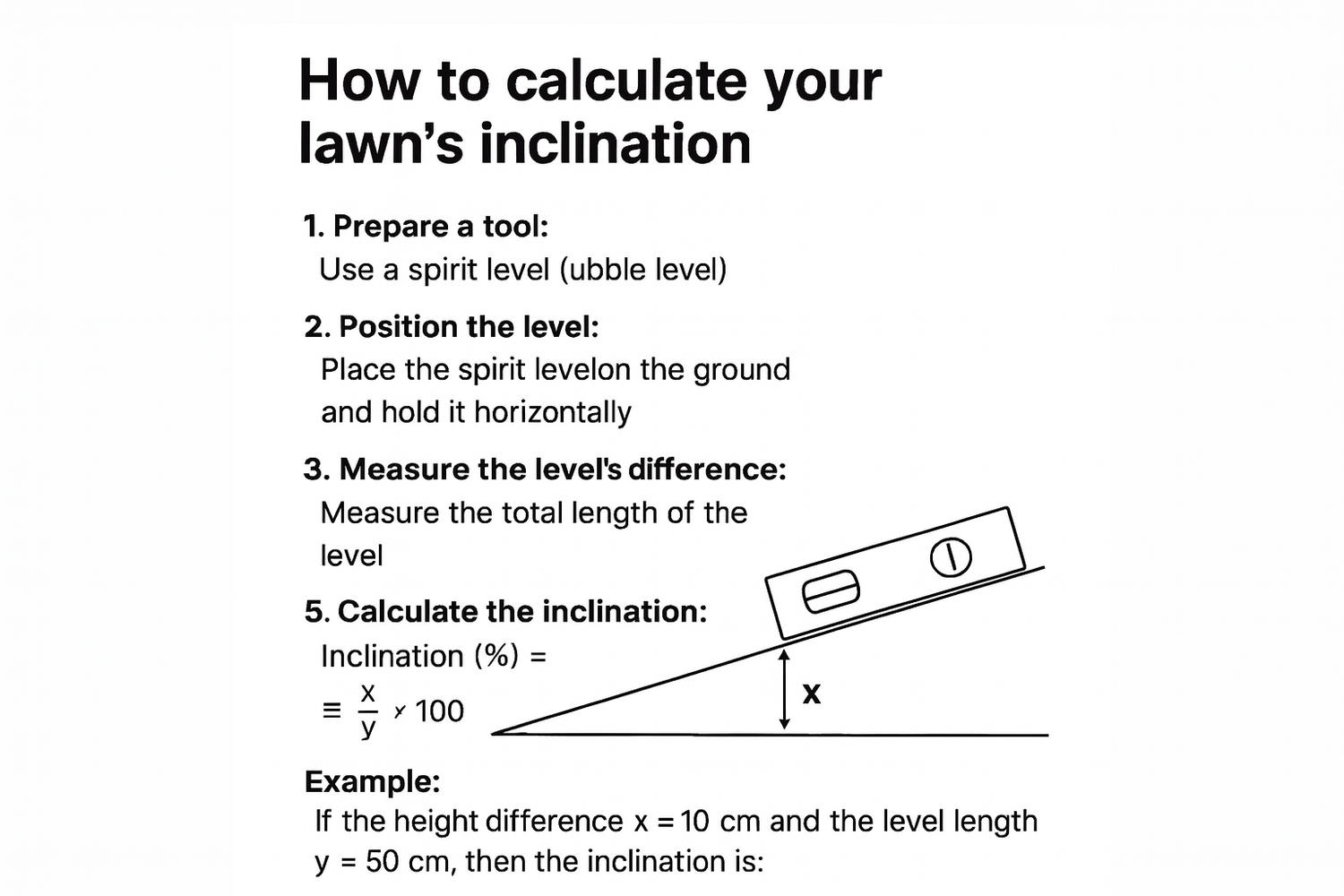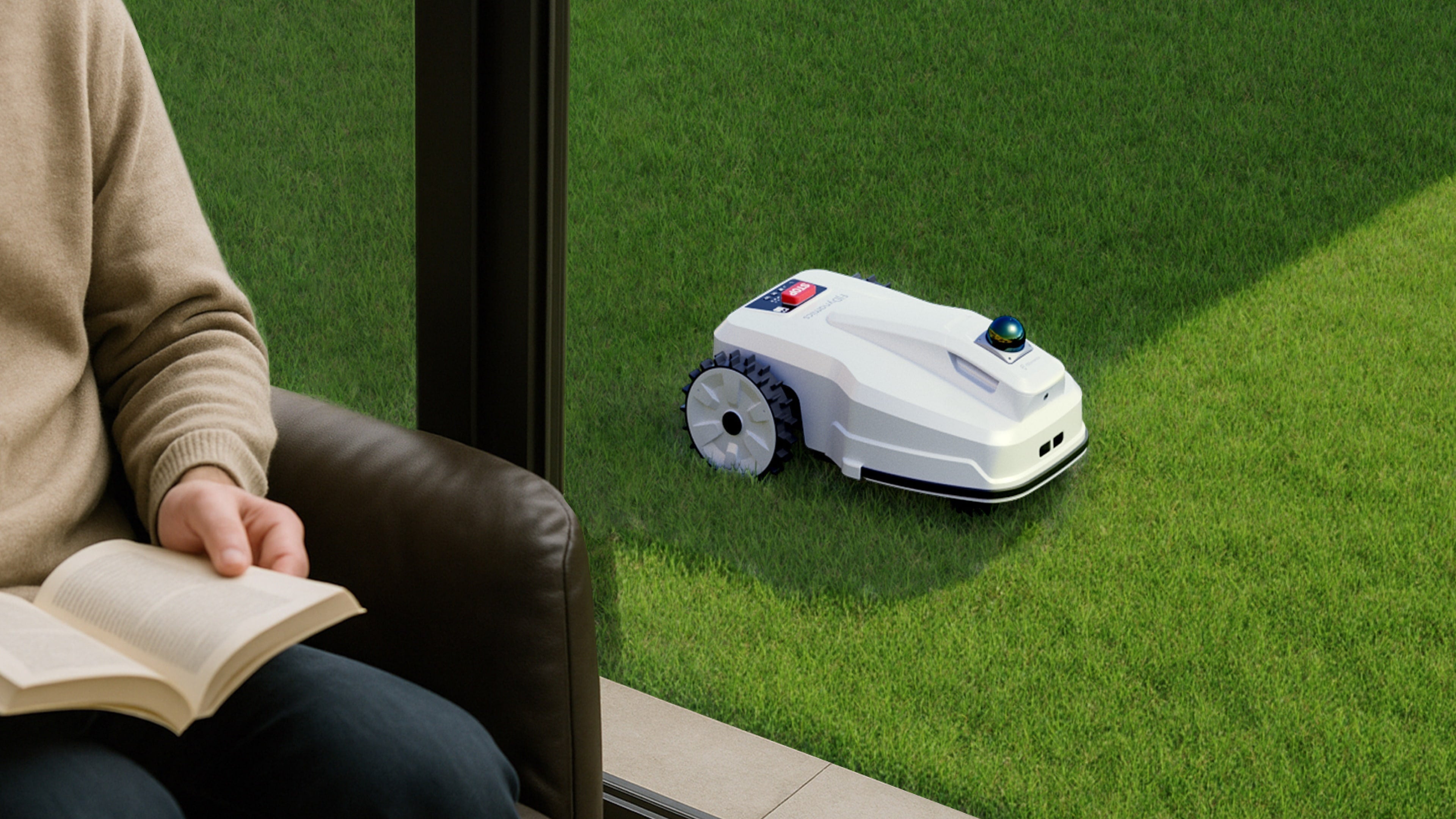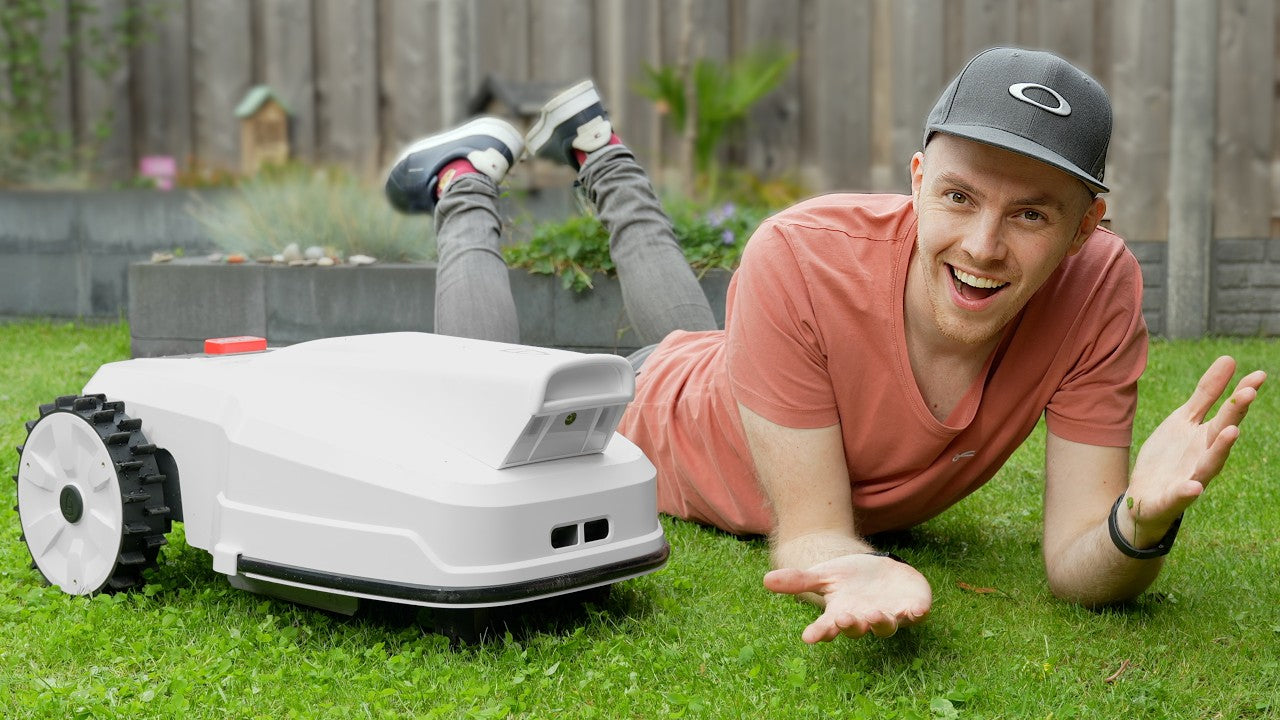Wenn Sie über die Anschaffung eines Mähroboters nachdenken, ist die Neigung Ihres Rasens einer der wichtigsten, aber oft übersehenen Faktoren. Selbst der intelligenteste Mähroboter hat Schwierigkeiten, wenn Ihr Rasen steiler ist, als es seine Konstruktion zulässt. Dieser kurze Ratgeber erklärt Ihnen, wie Sie die Neigung Ihres Gartens messen und den besten Mähroboter für Hügel, große Rasenflächen und unebenes Gelände auswählen.
Warum das Gefälle Ihres Rasens wichtig ist
Ein Mähroboter mäht und navigiert automatisch, aber die Leistung an Hängen variiert stark.
- Geringe Steigungen (unter 20 %) – damit kann so gut wie jeder automatische Rasenmähroboter umgehen.
- Mittlere Steigungen (20–35 %) – benötigen stärkere Motoren und eine bessere Traktion.
- Steile Hänge (35–70 %) – benötigen einen professionellen oder geländegängigen Mähroboter.
Wenn Ihr Garten Hügel, unebene Stellen oder Bereiche mit mehreren Zonen aufweist, gewährleistet die Wahl des richtigen Modells Sicherheit, Schnittqualität und Effizienz.
Tipp: Prüfen Sie vor dem Kauf die Angabe zur „maximalen Steigung“ jedes Modells – diese wird üblicherweise in Prozent oder Grad angegeben.
Wie man das Gefälle seines Rasens misst
Das Messen des Gefälles dauert nur wenige Minuten und kann Sie davor bewahren, den falschen Rasenmäher zu kaufen.
Schritt 1: Finde den steilsten Bereich
Gehen Sie in Ihrem Garten umher und ermitteln Sie die steilste Steigung, die Ihr Rasenmäher bewältigen muss. Diese Fläche muss gemessen werden.
Schritt 2: Verwenden Sie zwei Pflöcke und eine waagerechte Schnur
- Schlagen Sie oben und unten am Hang jeweils einen Pflock ein.
- Verbinden Sie die beiden Teile mit einer Schnur und richten Sie sie mithilfe einer Wasserwaage waagerecht aus.
- Die Schnur ist Ihre „horizontale Linie“.
Schritt 3: Steigung und Lauf messen
- Messen erheben = vertikaler Abstand von der Schnur bis zum Boden am unteren Pfahl.
- Messen laufen = horizontaler Abstand zwischen den beiden Pfählen.
Schritt 4: Berechnen
Verwenden Sie die Formel:
Steigung (%) = (Anstieg ÷ Lauf) × 100
Zum Beispiel entspricht ein Höhenunterschied von 20 cm bei einer horizontalen Entfernung von 100 cm einer Steigung von 20 %.
Das war's – jetzt kennen Sie das Gefälle Ihres Rasens.
Was Gradienten für Mähroboter bedeuten
Die Hersteller bewerten jeden Mähroboter nach der maximalen Steigung, z. B. 25 %, 35 % oder 70 %.
Diese Zahlen zeigen, wie steil ein Gelände sein kann, das der Rasenmäher sicher mähen kann, ohne an Traktion zu verlieren.
- Basismodelle Griff ≤ 25 %. Ideal für kleine, ebene Gärten.
- Mittelklassemodelle bis zu 40 %. Idealer Mähroboter für große Gärten mit leichten Hanglagen.
- Premium-Modelle ≈ 70 %. Der perfekte Mähroboter für Hügel, unwegsames Gelände oder unebene Rasenflächen.
Wenn die Steigung die zulässige Neigung Ihres Rasenmähers überschreitet, kann es zu Rutschen, ungleichmäßigem Schnitt oder einem Stillstand des Rasenmähers auf halber Strecke kommen.
Den richtigen Mähroboter für Ihren Rasen auswählen
1. Überprüfen Sie Ihr Gradientenergebnis.
Vergleichen Sie die gemessene Steigung mit den technischen Daten des Mähers. Bei einer Steigung von 30 % sollten Sie kein Modell mit 20 % Steigung wählen, sondern auf einen kabellosen oder autonomen Mähroboter für steileres Gelände umsteigen.
2. Wählen Sie den Rasenmähertyp passend zur Rasengröße.
- Kleine Höfe: versuchen Sie es Mini-Rasenmäherroboter oder Rasenmäherroboter für kleine Gärten – kompakt und preisgünstig.
- Mittelgroße Rasenflächen: Wählen Sie einen Mähroboter für große Rasenflächen (für Flächen von 0,25 bis 1 Acre).
- Große oder hügelige GärtenEntscheiden Sie sich für einen großen Rasenmähroboter, einen Rasenmähroboter für unwegsames Gelände.
3. Entscheidung über den Begrenzungstyp
Bei drahtbasierten Modellen werden Begrenzungsdrähte verwendet, um Zonen zu definieren.
Wenn Sie eine einfachere Einrichtung bevorzugen, wählen Sie einen Mähroboter ohne Begrenzungsdraht oder einen kabellosen Mähroboter – neuere GPS-gesteuerte Modelle sind einfach zu installieren.
4. Intelligente Funktionen berücksichtigen
Zu den modernen Designs gehören:
- App-Steuerung – Mähpläne aus der Ferne überwachen.
- Abbildung – effiziente Abdeckung auch für komplexe Rasenflächen.
- Selbstaufladend – automatische Rückkehr zum Ausgangspunkt.
Diese sind bei intelligenten Mährobotern bzw. selbstaufladenden Mährobotermodellen Standard.
5. Denken Sie an Ihr Budget.
Wenn Ihr Garten größtenteils flach ist, reicht ein günstiger Mähroboter aus.
Für Hänge und große Flächen empfiehlt sich jedoch die Investition in einen professionellen oder gewerblichen Mähroboter, um eine lange Lebensdauer zu gewährleisten.
Reales Beispiel: Vom Hinterhof zum Hang
Stellen Sie sich vor, Sie haben einen 800 m² großen Garten mit einem Gefälle von 25 %.
Sie berechnen (Anstieg/Ablauf) und bestätigen, dass es sich um einen moderaten Wert handelt.
Sie können getrost einen elektrischen Mähroboter oder einen kabellosen Mähroboter mit einer Nennleistung von bis zu 35 % wählen.
Bei einer Steigung von 50 % würde man nach einem geländegängigen Mähroboter suchen – vielleicht kabellos und per Handy-App steuerbar.
Solche Modelle bewältigen problemlos unebenes Gelände, große Gärten oder das Mähen von Vorder- und Hintergärten ohne manuellen Aufwand.
Schnelle Installationstipps für geneigte Rasenflächen
- Vor jeder Steigung muss ein ebener Bereich von 1 – 1,5 m Länge frei bleiben.
- Vermeiden Sie es, Ladestationen an Steigungen aufzustellen.
- An steilen Kanten sollten die Begrenzungslinien so angepasst werden, dass sichere Abstände eingehalten werden.
- Reinigen Sie die Räder regelmäßig – nasses Gras verringert die Haftung.
Wenn Sie diese Schritte befolgen, kann jeder Mähroboter für unebenes Gelände eine gleichmäßige Traktion und saubere Schnittlinien gewährleisten.
Sind Sie bereit, den perfekten Rasenmäher zu finden?
Egal ob Sie einen kabellosen Mähroboter, einen Mähroboter ohne Führungsdraht oder einen automatischen Mähroboter für eine kleine Terrasse wünschen, entscheidend ist die Kenntnis des Gefälles Ihres Rasens.
Die Mähroboter von FJDynamics sind für den praktischen Einsatz konzipiert – leistungsstark, intelligent und für jeden Garten geeignet. Jedes Modell bewältigt Steigungen von bis zu 65 % (ca. 33°) und gewährleistet so einen stabilen Betrieb selbst auf steilem oder unebenem Gelände. Dank fortschrittlicher RTK-Navigation, kabelloser Kartierung und intelligenter Steuerung mit automatischer Aufladung bieten unsere Mähroboter eine präzise, effiziente und vollautomatische Rasenpflege für kleine Gärten und große Flächen.
Wenn Sie verschiedene Modelle vergleichen oder herausfinden möchten, welcher Rasenmäher am besten zu Größe, Neigung und Ihren Bedürfnissen Ihres Rasens passt, besuchen Sie unsere vollständige Website. Kaufberatung für MähroboterDie
Bereit für müheloses Rasenmähen?
Entdecken und kaufen Sie Ihren FJDynamics Mähroboter noch heute im FJDynamics Online-Shop.

